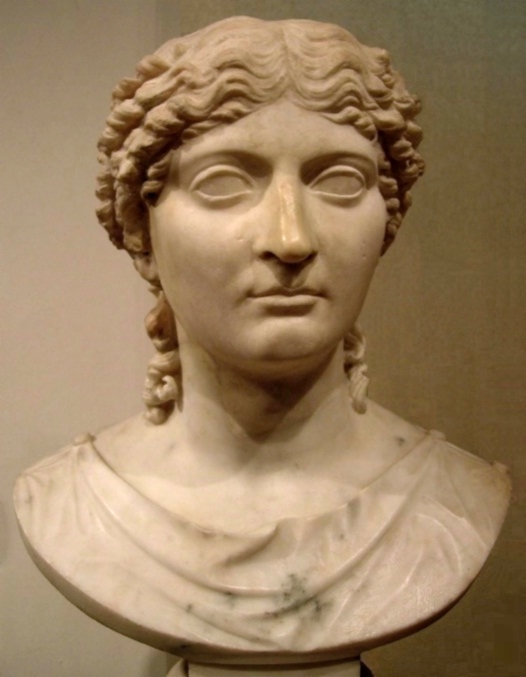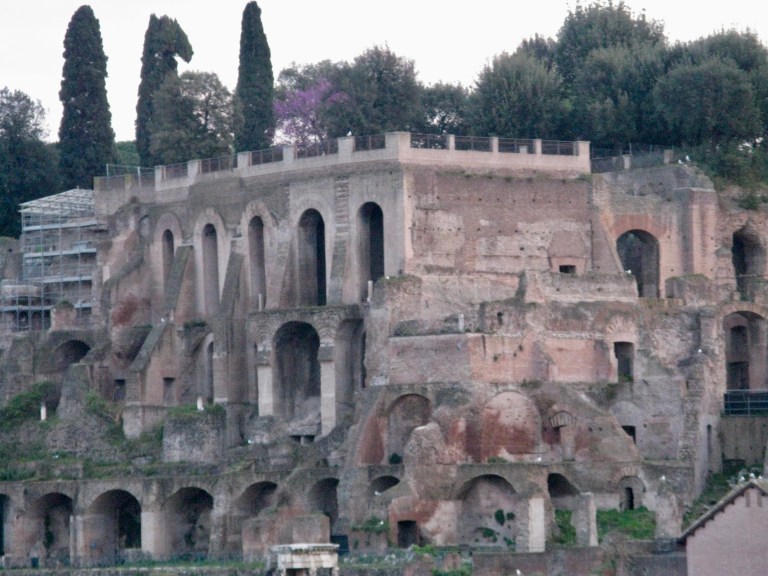On 18 July 64 AD The Great Fire of Rome broke out, spreading rapidly in the area of the Circus Maximus and reaching the Palatine Hill.
Homes, apartments and shops were destroyed by the blaze, which raged over the course of six days, during which many Ancient Romans lost their lives.
No one is sure what caused the fire – but all the theories of how it started point firmly to one man – Nero.
Nero was the heir to his great uncle, having been adopted by the Emperor Claudius. He ruled from 13 October 54 AD to 9 June 68 AD. Nero is best known for his debauchery and cruelty. His official name is Imperator Nero Claudius Divi Claudius filius Caesar Augustus Germanicus – quite a mouthful – and he was born in 37 AD and died in 68 AD, committing suicide rather than face the death penalty, after being judged an enemy of the people. He is the first Roman Emperor to commit suicide.
His mother was Agrippina the Younger and it is thought she was involved in the death of the Emperor Claudius, so maybe Nero inherited his ruthless streak from his mother. However, Agrippina dominated her son throughout his life and eventually, after he had been Emperor for five years, he finally escaped her influence and ordered her to be killed.

Whether Nero was also a firestarter is the subject of conjecture – accounts of the Great Fire of Rome exist in ancient texts by writers like Tacitus and Suetonius. Tacitus claims that Nero was in Antium – where he was born – when the fire broke out and returned to Rome when he heard news of the fire and organised supplies and shelter for citizens who had lost their homes.
Tacitus’ record of the fire states that three of Rome’s 14 districts were completely destroyed and seven suffered damage, leaving only four districts untouched.
So why would Nero want to burn the city he governed?
- One theory is that he ordered men to go out into the city and pretend to be drunk and then set fire to the city. It is reported while this was happening, he remained in his palace on the Palatine Hill playing the lyre and singing. So perhaps some kind of destructive perversion had led him to carry out the act.
- Another theory is that Nero quite happily ordered his men to burn the city and watched the spectacle from the Tower of Maecenas on the Esquiline Hill, so perhaps he was a pyromaniac.
- Another account has Nero happily ordering his men to go and burn the city, while he sat on a stage and played the lyre – so quite clearly some kind of perverse narcissist.
- And another theory is that the fire was an accident – Nero was in Antium at the time and so was not to blame.
- It has also been suggested that the fire was started so that Nero could construct his Domus Aurea on the site created, although this is more than 1km from the fire’s site.
- And finally the blame was laid at the feet of the Christian community in Rome, who were becoming increasingly unpopular because Christianity was in direct opposition to the Roman practice of worshipping a whole range of different gods, rather than one god. It is thought either Nero started the fire to blame it on the Christians – or that because the finger of blame was being pointed at Nero, so he blamed it on the Christians.
We will probably never know how the Great Fire of Rome started – it was in the district of the Caelian Hill, near the Caracalla Baths, so might have started in a shop (as the great Fire of London in 1666 did), or even the kitchen of a private residence. The wealthy of Rome lived in the area and even today, the area is quite wooded, so kindling is readily available.

Whether Nero was to blame or not, he certainly got his comeuppance for his crimes some years later, spectacularly stabbing himself in the throat as he was about to be arrested and put to death for being public enemy number one. Live by the sword, die by the sword, perhaps. He was mourned by some – and a cult that he would be reincarnated and return sprang up, as well as the theory he had to died and would one day return to Rome.
Today Nero is immortalised in the gallery of emperors in the Borghese Gallery in Rome, where you can gaze straight into the faces of some of the most famous men in history – and judge for yourself whether they were good or evil. Or pyromaniacs. He has a touch of Henry VIII about him in later years, so maybe he was reincarnated after all…and we all know how well that went.

All images copyright A. Meredith except where stated.

